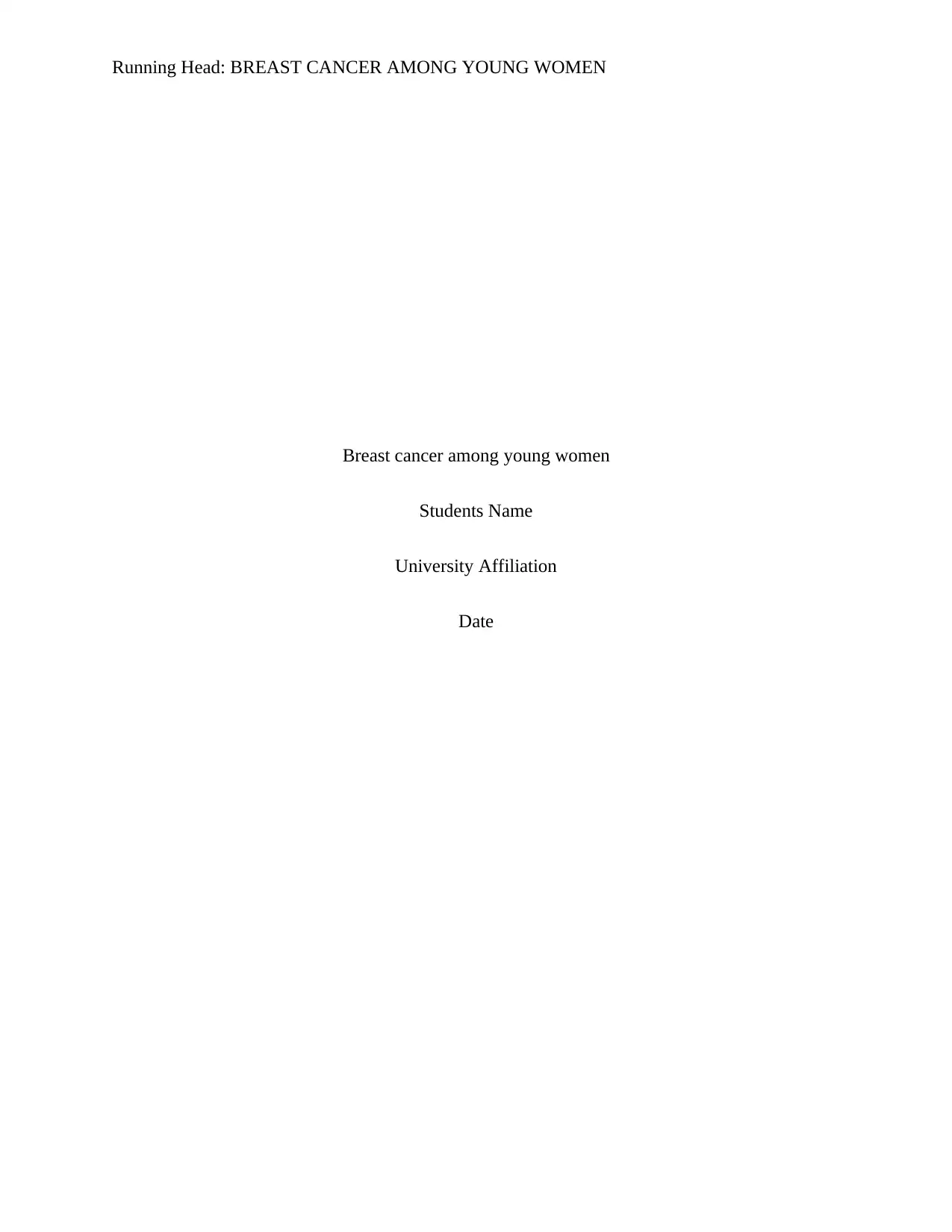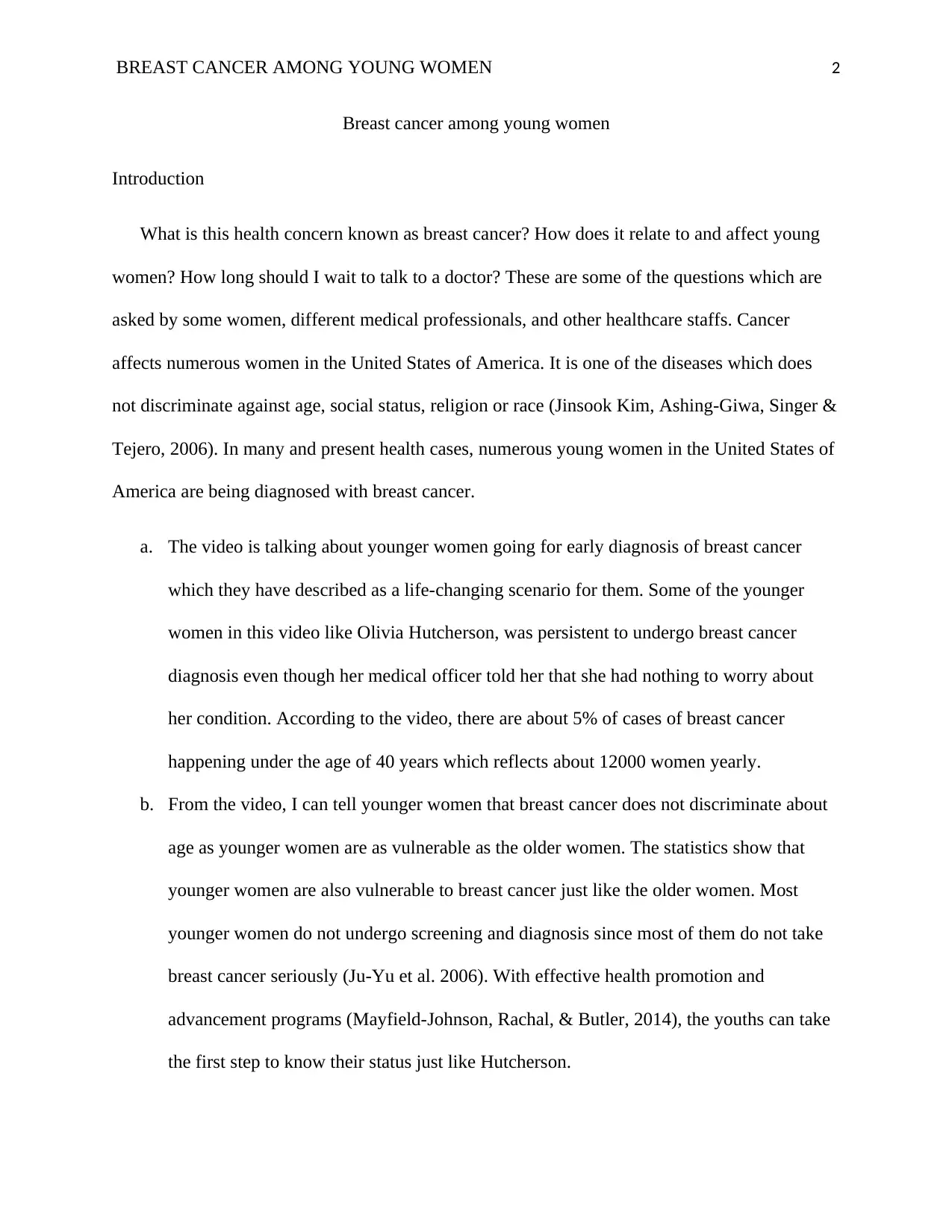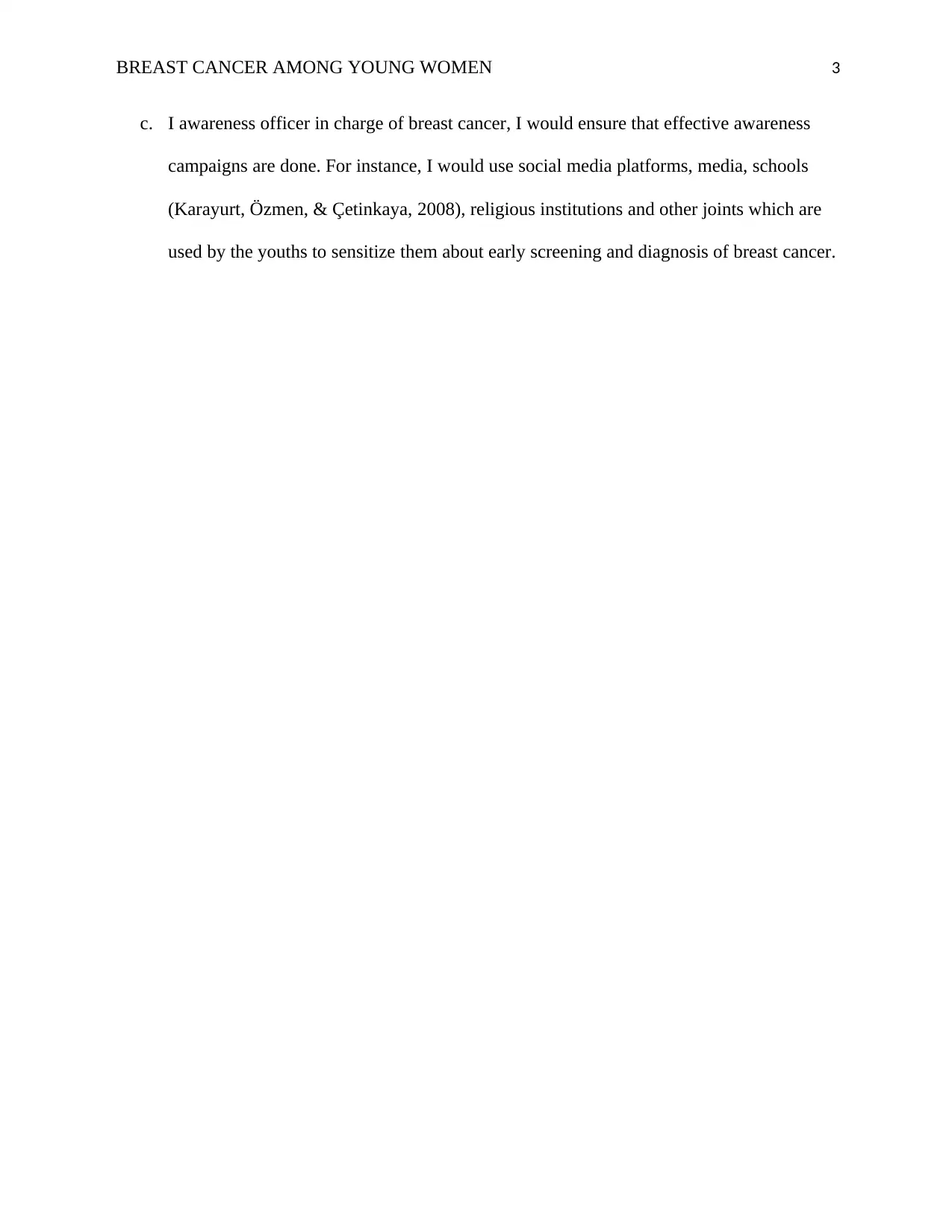Understanding Breast Cancer Risks and Awareness in Young Women
VerifiedAdded on 2023/05/30
|4
|653
|330
Report
AI Summary
This report addresses the critical health concern of breast cancer among young women in the United States, emphasizing that the disease does not discriminate by age. The report highlights a video featuring young women advocating for early diagnosis, despite facing initial dismissal from healthcare providers. It notes that approximately 5% of breast cancer cases occur in women under 40, amounting to around 12,000 cases annually. The report stresses the vulnerability of younger women to breast cancer and advocates for increased awareness and health promotion programs to encourage early screening and diagnosis. As an awareness officer, the author would implement extensive campaigns using social media, schools, and religious institutions to sensitize young people about the importance of early detection.
1 out of 4




![[object Object]](/_next/static/media/star-bottom.7253800d.svg)